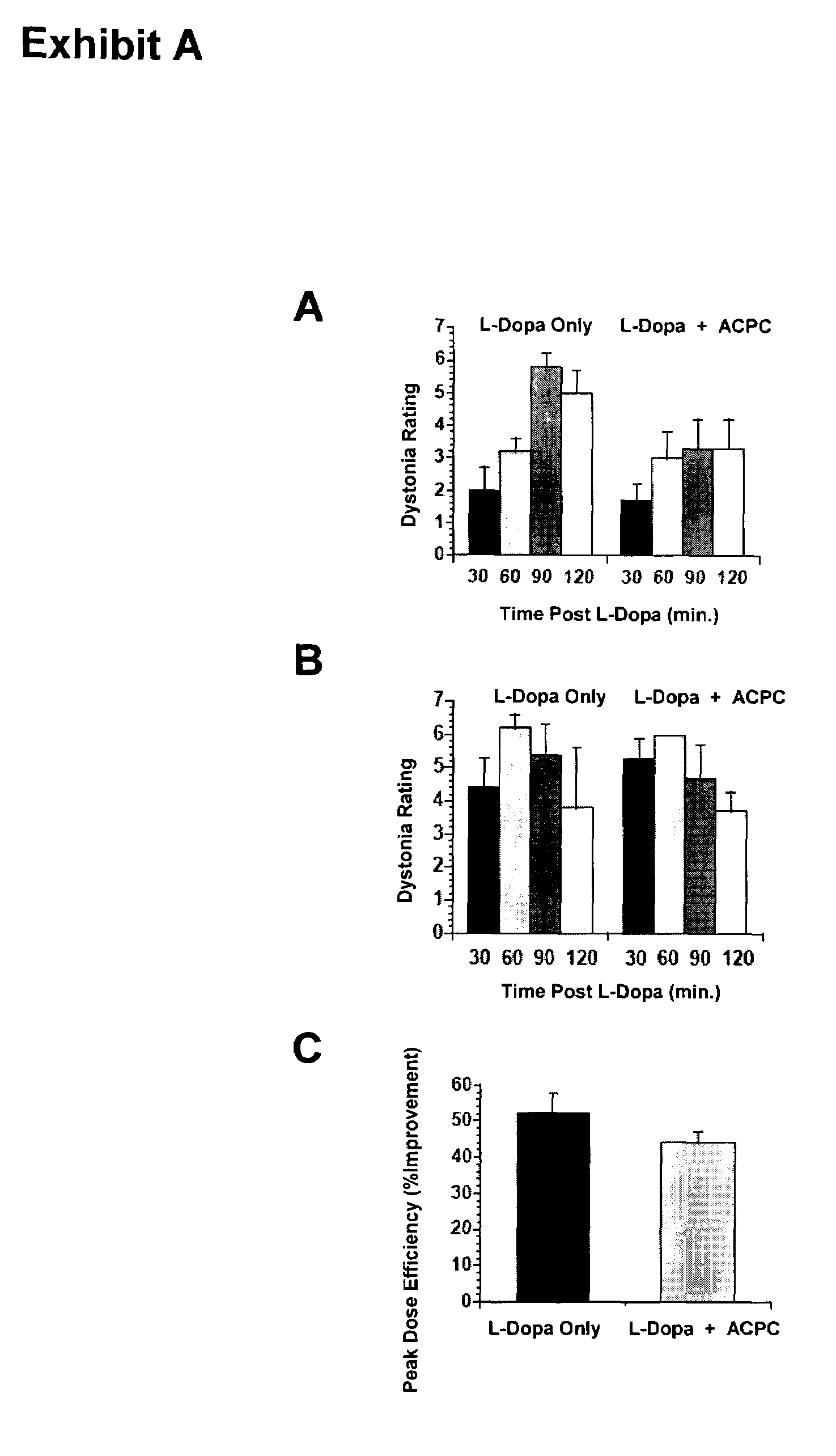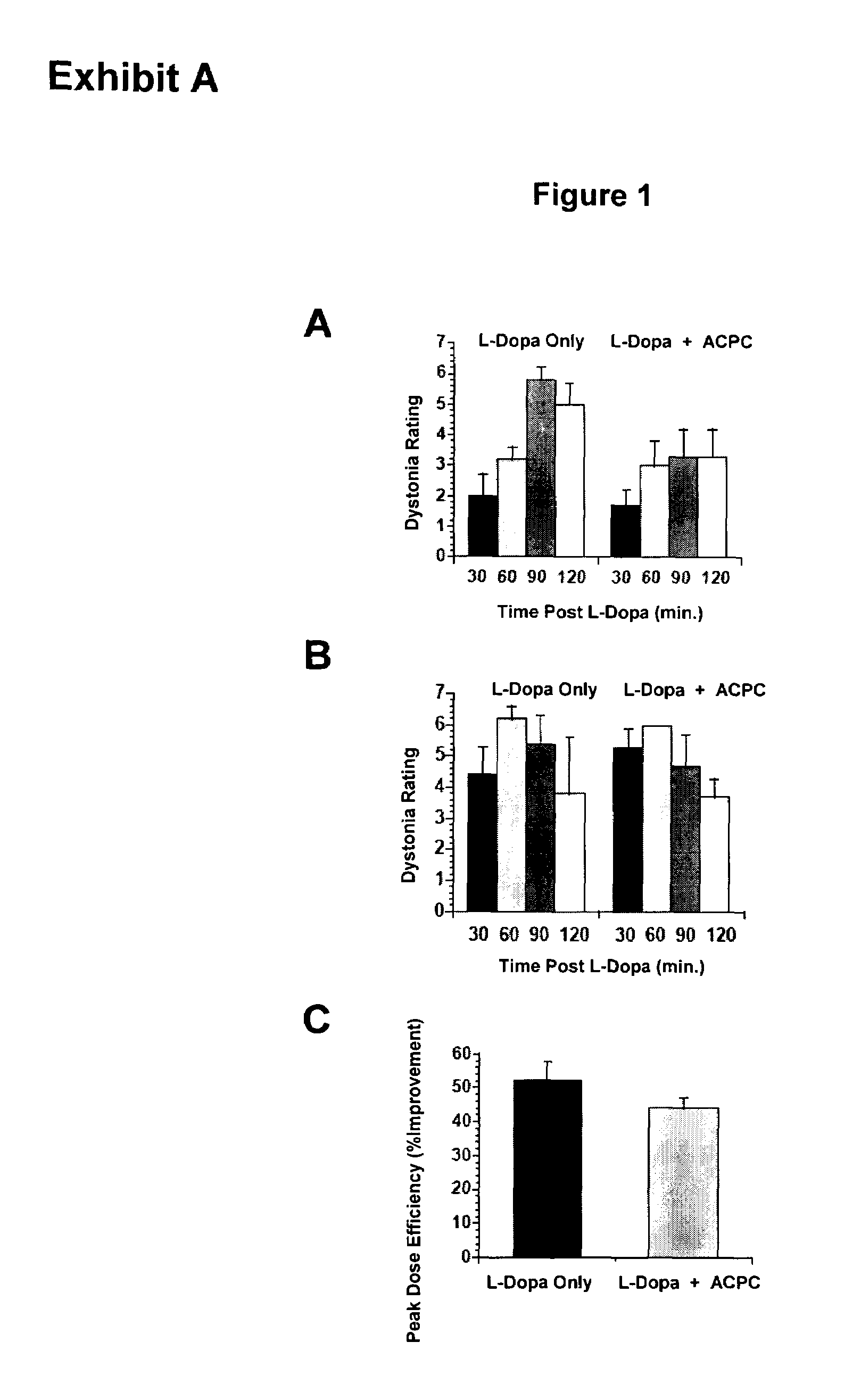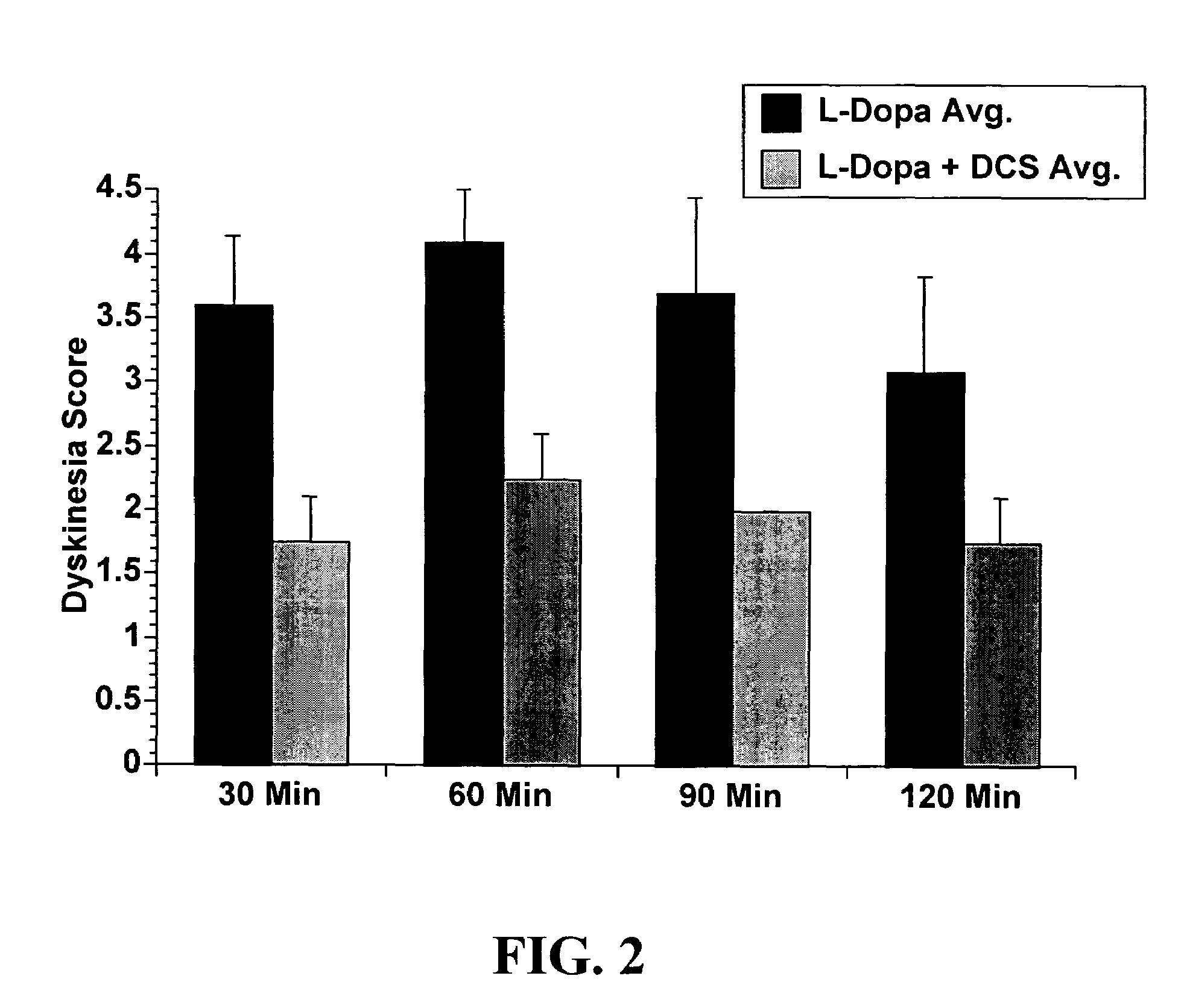Methods and kit for treating Parkinson's disease
a parkinson's disease and kit technology, applied in the field of parkinson's disease therapies, can solve the problems of pd patients motor side effects, and the majority of patients with pd experiencing a “wearing-off” of drug effects, so as to improve the therapeutic efficacy of levodopa in treating pd, and reduce the frequency and severity of levodopa-induced motor side effects
- Summary
- Abstract
- Description
- Claims
- Application Information
AI Technical Summary
Benefits of technology
Problems solved by technology
Method used
Image
Examples
example 1
Enhanced Duration of Anti-Parkinson Effect by Combination of D-Cycloserine and Levodopa
[0066]Eight mg / kg D-cycloserine was administered to two parkinsonian monkeys with an established therapeutic response to levodopa, together with 40 mg / kg levodopa plus the 15 mg of the peripheral dopa decarboxylase inhibitor benserazide. Symptomatic benefit was assessed by raters blind to treatment condition. As shown in FIG. 1, administration of partial glycine agonist with levodopa enhanced the levodopa “on” time, or duration of symptomatic relief by levodopa, by 41% compared to levodopa plus benserazide alone.
example 2
Administration of Partial Glycine Agonist D-Cycloserine with Levodopa Reduces the Severity of Levodopa-Induced Dyskinesias
[0067]A parkinsonian monkey was primed for choreiform dyskinesia following chronic administration of levodopa plus the peripheral dopa decarboxylase inhibitor benserazide. In this monkey, a 40 mg / kg challenge dose of levodopa caused significant choreiform dyskinesias (see FIG. 2; “L-Dopa Avg.” bars). Eight mg / kg D-cycloserine administered with 40 mg / kg levodopa plus the 15 mg of the peripheral dopa decarboxylase inhibitor benserazide significantly decreased the severity of these dyskinesias at least over a period of 120 minutes (see FIG. 2; “L-Dopa+DCS Avg.” bars). Severity of the dyskinesias was rated by observers blind to the treatment condition. Three independent repetitions of the study were performed.
example 3
Addition of Partial Glycine Agonist D-Cycloserine to Levodopa Therapy Reduces the Severity of Levodopa-Induced Dystonias
[0068]In a parkinsonian monkey, chronic administration of levodopa plus the peripheral dopa decarboxylase inhibitor benserazide resulted in primarily dystonia. Under these conditions, 8 mg / kg D-cycloserine was administered to the monkeys with 40 mg / kg levodopa plus 15 mg benserazide. The severity of the dystonia was rated by observers blind to the treatment condition. As can be seen in FIG. 3, administration of D-cycloserine (“DCS”) with levodopa / benserazide (“L-Dopa”) significantly decreased the severity of the dystonias at least over a period of 120 minutes. Three independent repetitions of the study were performed.
PUM
| Property | Measurement | Unit |
|---|---|---|
| body weight | aaaaa | aaaaa |
| body weight | aaaaa | aaaaa |
| frequency | aaaaa | aaaaa |
Abstract
Description
Claims
Application Information
 Login to View More
Login to View More - R&D
- Intellectual Property
- Life Sciences
- Materials
- Tech Scout
- Unparalleled Data Quality
- Higher Quality Content
- 60% Fewer Hallucinations
Browse by: Latest US Patents, China's latest patents, Technical Efficacy Thesaurus, Application Domain, Technology Topic, Popular Technical Reports.
© 2025 PatSnap. All rights reserved.Legal|Privacy policy|Modern Slavery Act Transparency Statement|Sitemap|About US| Contact US: help@patsnap.com



